
Solah Shringar: An A-Z Guide for the New-age Bride!
“Jewellery is like ice cream. There’s always room for more.”
The radiance emanated by ornaments has always caught my fascination. Wearing jewellery doesn’t simply add shimmer and bling to your overall ensemble, it also adds a beguiling, unmissable charm.
In Indian culture, women are considered as embodiments of ‘shakti’ or power. Beliefs say these ornaments are meant to protect certain parts of the body and thereby, control and channelize the power that these parts exude. Moreover, these 16 ornaments are also responsible for a head to toe beautification of a married woman.
This ritual of making the bride wear each piece of jewellery takes place before the wedding. During this ritual, the to-be-bride is equated with the Hindu Goddess, Lakshmi- Goddess of fertility, prosperity, and beauty.
I’ve created a lookbook for y’all to check out with the different 16 ornaments which together comprise the quintessential ‘solah shringar’ and the importance of each:
1. Bindi
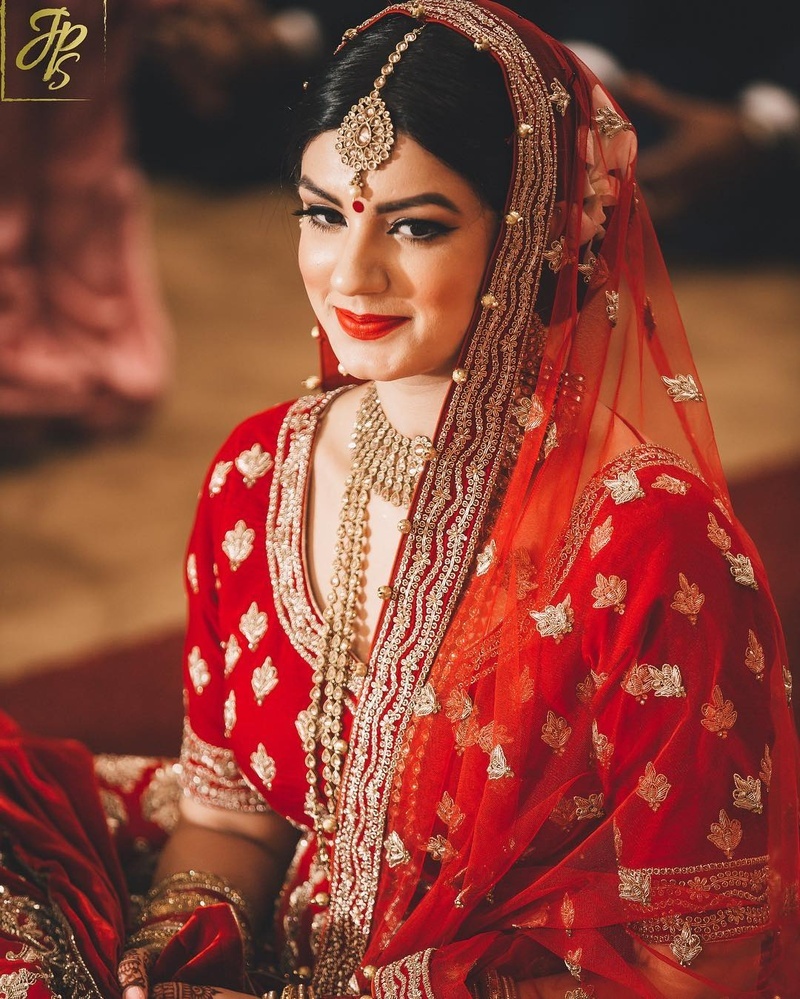
Image source: Jag Photo Studios
The bride wears her bindi in the middle of her eyebrows. This is symbolic of a woman being married and it has religious meaning to it as well. It in a way symbolizes the third eye, which is a representative of seeing the future.
2. Sindoor

Image source: Romesh Dhamija Productions
Sindoor or vermillion powder is applied by the groom onto the middle parting of the bride’s hair, during the wedding ceremony. This shringar signifies matrimony and the well-being of the husband.
3. Maangtikka

Image source: Slice of life pictures
A ‘shringar’ worn by brides on their forehead, a mang tikka is worn mainly to add beauty and charm to the overall look of the bride! Placed on the agya chakra (on the forehead), this signifies the holy union between the bride and groom on a mental, emotional and physical level.
4. Kajal

Kajal or these days eye-liner is applied to accentuate the shape of the bride’s eyes and to make her look more attractive. Known to also strengthen the eyes, Kajal was traditionally applied for securing the bride from any ill omen or as we call it ‘Buri nazar’.
5. Nath
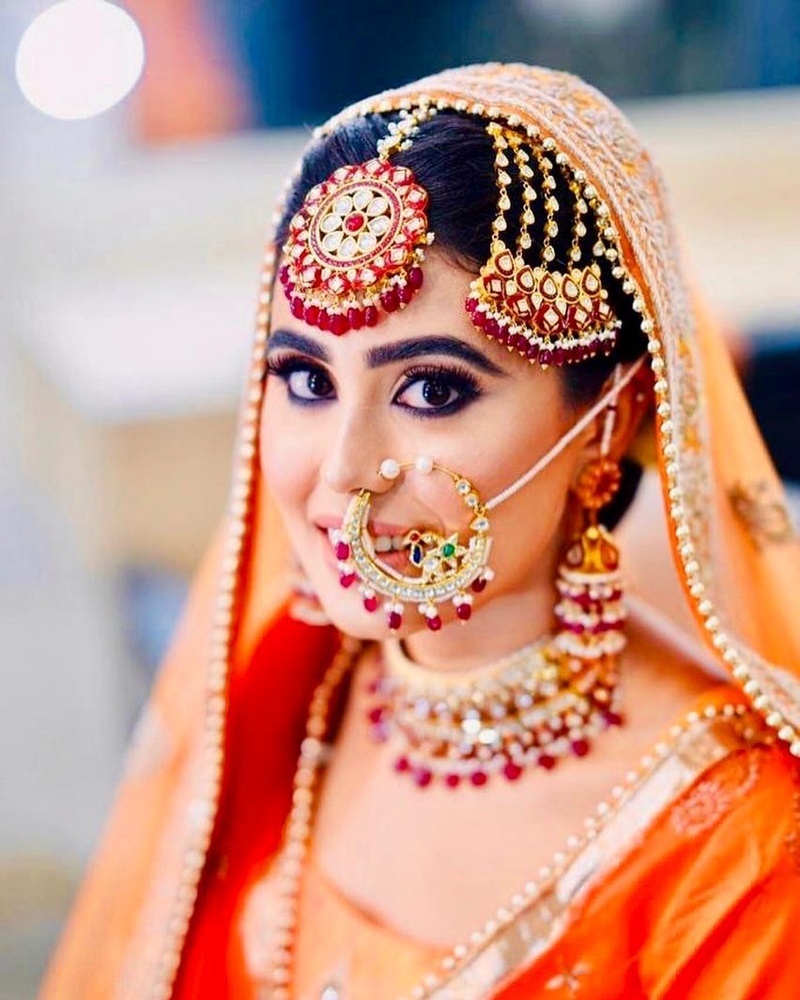
Image source: Shahid Naar
It is believed that getting your nose pierced prevents the woman from experiencing too much pain during childbirth. Well, if this to be believed or not, I am not too sure, but this ornament certainly does add to the overall beauty of the bride.
6. Haar or necklace

Image source: Stories by Joseph Radhik
Symbolizing prosperity, brides usually are seen flaunting oversized necklaces made out of kundan, gemstones, diamonds or gold. Sometimes, brides also wear layers of necklaces, beautifying the ensemble. Necklaces are known to get rid of evil omen and charms. Traditionally it was worn by women so as to protect them from anyone hypnotizing them.
7. Karn Phool or Earrings

Image source: Deepika Padukone
Jhumkaas have predominantly ruled the earring arena for long, however, new-age brides are now experimenting with various earring styles. From chaandbalis, waterfall earrings, diamond earrings, there is a plethora of options to choose from. It is believed that a spiritual impulse is ignited when we get our lobes pierced and have minimal amount of weight dangling from them, thus making it auspicious to wear earrings.
8. Mehendi

Image source: Henna by Divya
One of the most important rituals as part of a Hindu wedding, mehendi or henna is applied on the hands and feet of brides a few days prior to her wedding. The almost crimson colour of the mehendi denotes the love between the couple. It is believed the darker the colour seems to be, the more a bride’s husband will love her.
9. Bangles

Image source: Hitched & Clicked
Well, I haven’t ever come across a Hindu bride sans a choodha or a set of bangles. This is proof enough of how significant this ornament is in a bride’s trousseau. Signifying prosperity and long life, bangles are found in different styles and colours! A woman’s body is basically circular in shape. Bangles are worn to increase the blood circulation in the bride’s body and revert the cosmic energy, which is emanated as a result of the body shape.
10. Bajuband or Armlet
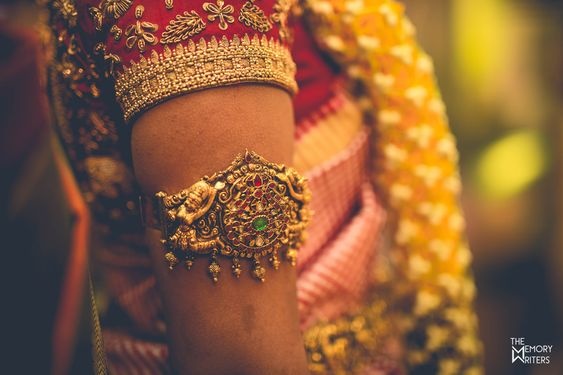
Image source: The Memory Writers
Worn on the upper arm of the hand, this ornament is usually donned by Rajasthani and South Indian brides.
11. Haathphool

Image source: Shreya Juneja
This ‘shringar’ never seems to go out of trend, does it? This ornament has become quite a staple in a bride’s trousseau and for all the right reasons! While you wear your haathphools, you would notice that it is connected by a ring in every finger, except the thumbs. According to Indian scholars, every finger is connected to some part of the body or brain and has its respective advantages. However, friction caused by the rings on the thumbs can cause activation of the pleasure hormone, thus people avoid wearing rings on their thumbs.
12. Hair ornaments
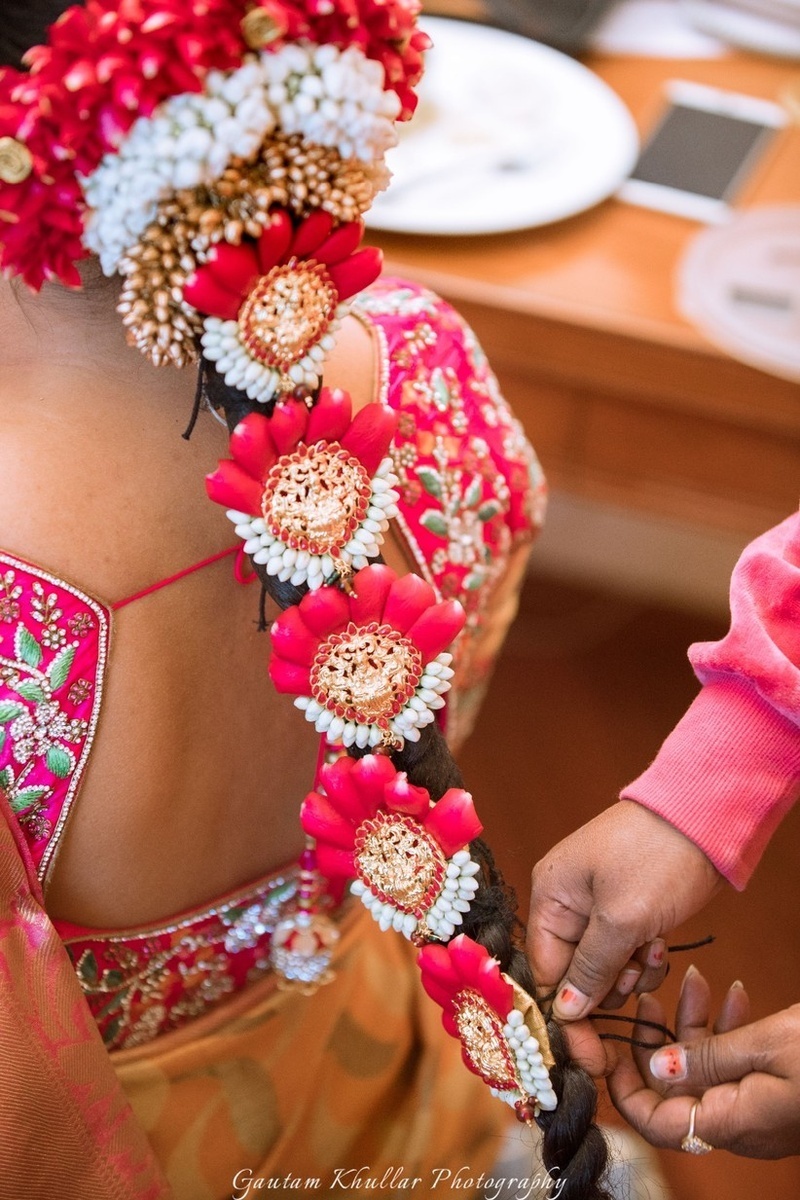
Image source: Gautam Khullar Photography
From gold ornaments, bells, baby breaths, and other vibrant flowers- there is literally no stopping when it comes to brides experimenting with hair accessories!
13. Kamarband or Waistband

Image source: Stories by Joseph Radhik
This accentuates the silhouette or shape of the bride while adding grace to her entire look. Made of gold and studded with gems, this ornament is seen flaunted mostly by South Indian brides. Not particularly scientific, this has more of a practical application. Newly married brides are asked to wear this so as to control them from putting on weight, especially around the hips and belly.
14. Payal or Anklet

Image source: Tarun Chawla Photography
An anklet or payal is worn, owing to the age-old belief that it attracts the entry of Goddess Lakshmi (money or prosperity) into the house. Traditionally, brides wore only silver anklets. The science behind this was to counter the currents passed in the bride’s body as a result of the heavy amount of gold jewellery she would wear, thus ensuring positive vibes.
15. Ittar or Scent

Worn by brides to maintain a charming and attractive throughout their wedding ceremonies.
16. Shaadi ka Joda or Wedding Attire
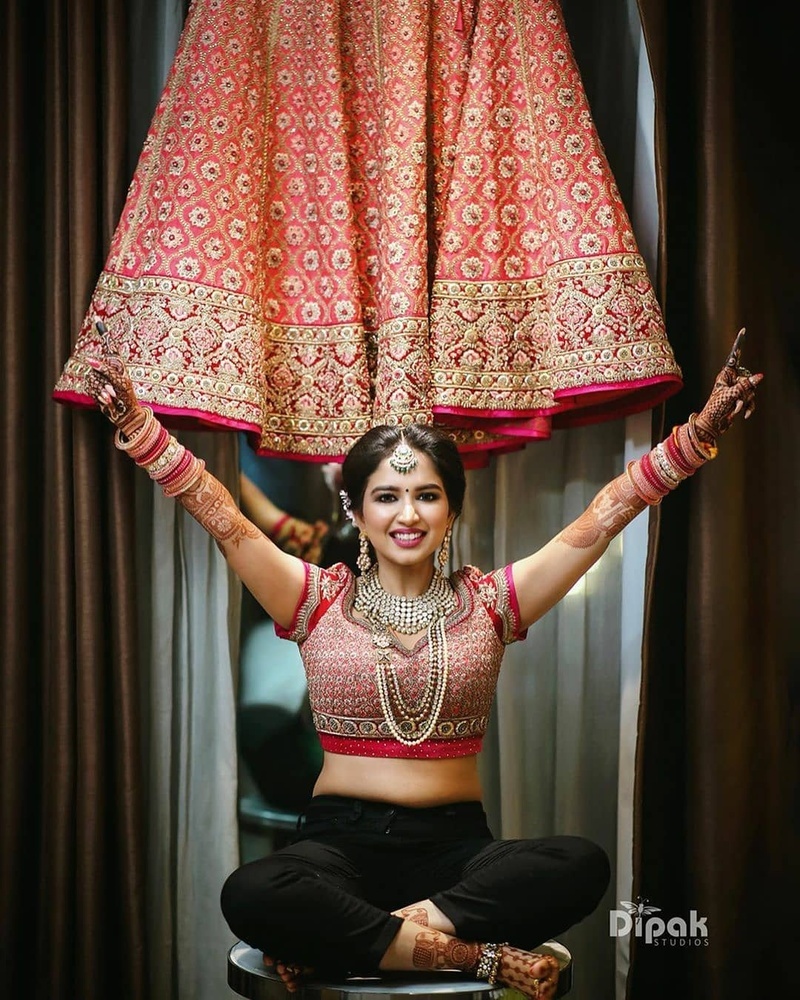
Image source: Dipak Studios
Quintessentially brides were seen wearing only reds and maroons. This is because the colour ‘red’ is associated with passion, romance, good luck, and prosperity.
Images source: Pinterest (unless specified)
Cover images: FotoArt (left) Vows & Tales (centre) Shahid Naar (right)










